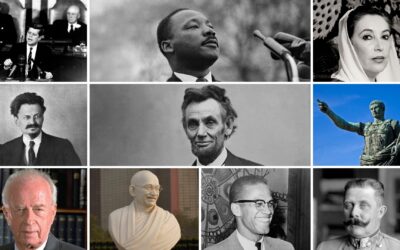The Role of Intelligence Agencies: The CIA and KGB Chronicles
In the shadows of post-World War II politics, two giants emerged, not countries, but covert agencies—the Central Intelligence Agency (CIA) of the United States and the Komitet Gosudarstvennoy Bezopasnosti (KGB) of the Soviet Union. These two intelligence agencies would engage in a high-stakes game of cat and mouse, with the fate of the world often hanging in the balance.
The Birth of Shadows: Origins and Mandates
Our tale begins in 1947, with the establishment of the CIA, formed out of the ashes of the wartime Office of Strategic Services (OSS). Its primary mandate was to gather and evaluate intelligence from around the globe, to safeguard American interests and preempt any threats. Across the ocean, the KGB, though it had predecessors like the Cheka and the NKVD, formally came into being in 1954. This agency had a dual purpose: foreign intelligence and domestic security, ensuring not just the Soviet state’s protection from external threats but also its dominance over its citizens.
A Web of Deceit: Famous Espionage Cases
In the labyrinthine alleys of the espionage world, few tales stand out as starkly as those of Rudolf Abel, Gary Powers, and Aldrich Ames.
Rudolf Abel, a brilliant Soviet spy, operated covertly in the U.S. until his capture in 1957. He was the master of disguise and carried out significant espionage activities. In a dramatic turn of events, he was later exchanged for Gary Powers, an American U-2 spy plane pilot shot down over Soviet airspace in 1960. The Powers incident exposed the U.S.’s spy plane activities, causing a significant diplomatic rift.
Then came Aldrich Ames, a double agent within the CIA, who, motivated by financial gains, betrayed several of the agency’s operations and operatives to the KGB. His betrayal led to the compromise of at least 100 U.S. intelligence operations and the execution of several U.S. assets.
The Dark Arts: Covert Operations
Behind the cloak of official diplomacy and military posturing, the CIA and KGB played a covert chess game, maneuvering pieces in the form of coups, assassinations, and propaganda efforts.
The CIA was often involved in orchestrating coups to overthrow governments deemed unfriendly to U.S. interests—like in Iran (1953) and Chile (1973). They financed rebel groups, disseminated propaganda, and, at times, even targeted leaders for assassination.
The KGB, on the other hand, was notorious for its ‘active measures’. It engaged in disinformation campaigns, political repression, and the occasional assassination of defectors and dissidents. Their influence stretched from Eastern Europe to Latin America, seeking to prop up pro-Soviet regimes and destabilize Western-aligned ones.
Eyes and Ears Everywhere: Espionage Technology
As the Cold War progressed, so did the tools of the trade. Both agencies invested heavily in technology.
The U.S. developed sophisticated satellite reconnaissance capabilities, notably the CORONA satellites, which provided invaluable intelligence about Soviet capabilities and intentions. The KGB wasn’t far behind, deploying its own orbital assets.
Both agencies also delved into the realm of covert communication tools. The CIA, for instance, used shortwave radios and ‘numbers stations’ to communicate with operatives. The KGB countered with burst communication devices that allowed for rapid, nearly undetectable transmissions.
Surveillance became an art form. Hidden microphones, or ‘bugs’, were planted everywhere—from embassies to hotel rooms. Some were so advanced they didn’t even require a power source, like the famous “Thing” bug, discovered in the U.S. Embassy in Moscow.
In the End: A Legacy of Shadows
The CIA and KGB, despite being products of their time, have left an indelible mark on the world of intelligence. Their stories—of spies, covert operations, and advanced tech—are a testament to the lengths nations will go to safeguard their secrets and gain an advantage.
While the KGB dissolved with the Soviet Union in 1991, evolving into the FSB and SVR, and the CIA continues its operations to this day, the legacy of their Cold War rivalry serves as a cautionary tale. It’s a story of how the thirst for information, if unchecked, can sometimes lead to actions that defy morality and ethics.
The chronicles of the CIA and KGB are not just tales of espionage—they are reflections of the times they operated in, mirrors to the geopolitical realities of the 20th century. They remind us that, often, the most significant battles are not fought in the open, but in the shadows.
Keywords:
- Covert: Hidden or secret.
- Espionage: The act of spying, especially a government spy obtaining secrets of another government.
- Mandate: An official order or commission to do something.
- Labyrinthine: Complicated and confusing, resembling a maze.
- Disinformation: False information spread deliberately to deceive.
- Dissidents: People who oppose official policy, especially an authoritarian state.
- Reconnaissance: A survey made for military purposes; any kind of preliminary inspection or examination.
- Defectors: People who abandon their country or cause in favor of an opposing one.
- Assets: Valuable items, usually referring to resources or agents in intelligence contexts.
- Geopolitical: Relating to the study of the effects of geography (human and physical) on international politics and international relations.
Key Takeaways:
- The CIA (USA) and KGB (USSR) were two prominent intelligence agencies during the Cold War era.
- Both agencies had distinct origins, with the CIA formed in 1947 and the KGB in 1954.
- Notable espionage cases like Rudolf Abel, Gary Powers, and Aldrich Ames underscore the dangerous cat-and-mouse game played between these agencies.
- Covert operations, including coups, assassinations, and propaganda campaigns, were pivotal strategies used by both agencies.
- Espionage technology, from satellite reconnaissance to covert communication tools, played a vital role in their intelligence-gathering capabilities.
- The legacy of the CIA and KGB rivalry serves as a lesson about the moral and ethical challenges posed by espionage.
Check out the Story of the Cold War Article Series
Cold War Chronicles: From Superpower Showdowns to Silent Echoes (Featured Article)
The Nuclear Arms Race: An Era of Fear and Hope
CIA vs. KGB: The Hidden Wars of the Cold War Era
The Cold War’s Echo in Africa: Decolonization and Proxy Battles
The Non-Aligned Movement: Navigating the Cold War’s Tumultuous Seas
Echoes of the Cold War: Its Indelible Mark on Popular Culture & Media
Capitalism vs. Communism: The Economic Tug of War during the Cold War










0 Comments
Trackbacks/Pingbacks